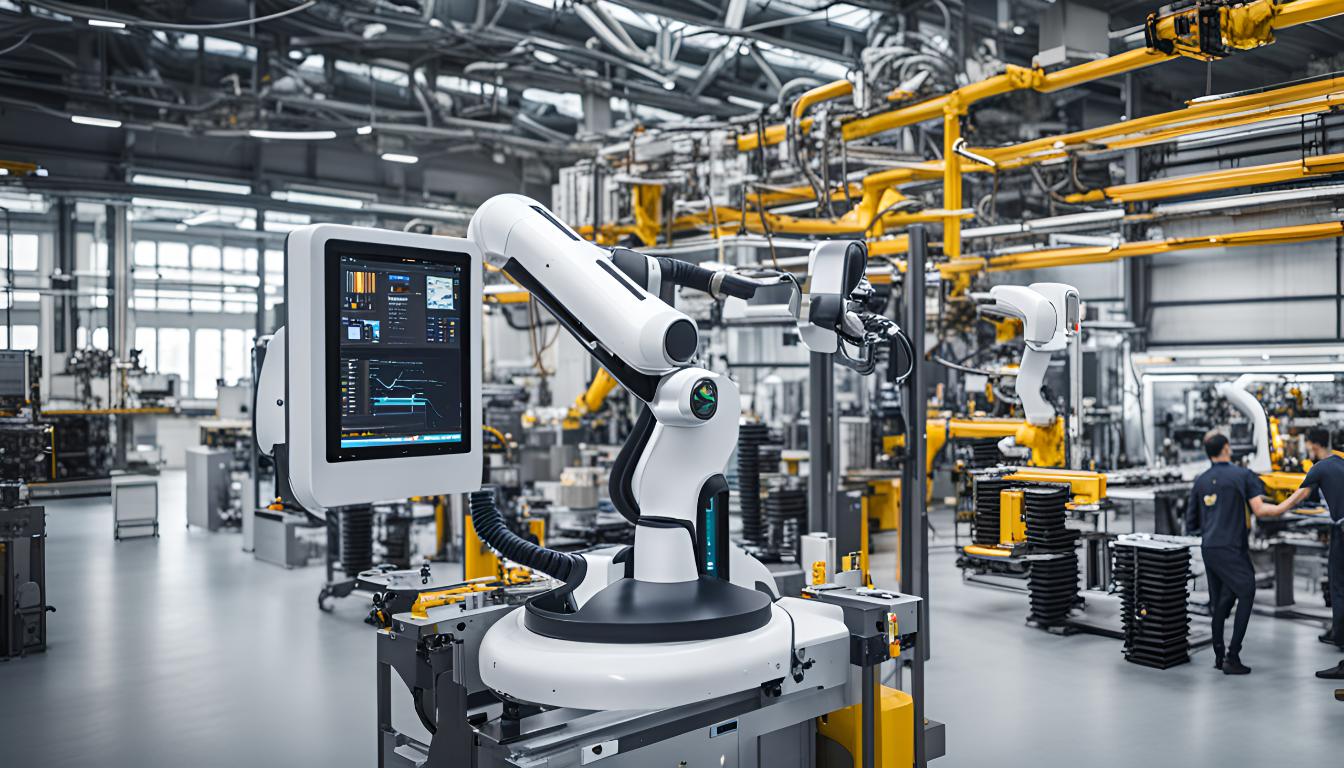01/05/2025
Industry 5.0 The Future of Personalized and Smart Manufacturing
Following the innovations and automation technologies brought by Industry 4.0, the business world now stands on the threshold of Industry 5.0; this new era represents the unique intersection of personalized and smart manufacturing techniques. This article outlines this new industrial era and shows how companies can remain competitive in the future. We examine in detail the basic principles and approaches of Industry 5.0, innovative solutions supported by practical examples, and the impact of smart manufacturing on industries. Get ready to learn what awaits us on this transformation journey. We will provide information on the future of personalized manufacturing and Industry 5.0, basic principles, practical examples, and the impact of smart manufacturing on industries.

Industry 5.0: A New Era of Human-Machine Collaboration
Industry 5.0 offers a personalized approach to production by redefining the collaboration between humans and machines. This evolution is particularly characterized by the integration of artificial intelligence and robotic systems. Unlike previous industrial revolutions, this new wave uses technology not only to enhance efficiency but also to promote a human-centric approach that minimizes social and environmental impacts.
With this transformation, smart factories and manufacturing technologies advance further, increasing flexibility and adaptability. Technologies developed within the framework of Industry 5.0 are designed to align production lines with human workers to enhance workplace safety and operational efficiency.
Personalized production processes, which boost businesses' ability to respond quickly to customization and customer demands, play a defining role in market dynamics. Personalized manufacturing is critical for meeting customer needs more directly and increasing the marketability of products.
Moreover, image processing technologies have the potential to enhance product quality by making error analysis and quality control processes on production lines more efficient. These technologies are one of the cornerstones of Industry 5.0 and are becoming an indispensable part of smart production processes.
Core Principles and Approaches: How Industry 5.0 Works
The core principles of Industry 5.0 focus on placing the human factor at the center, built upon the integration of personalized production and smart factories. This approach is designed to respond directly to customer needs and expectations. In personalized production, flexible and customized products are developed based on each customer’s specific requirements.
Technological advancements form the foundation of this new industrial phase. In particular, artificial intelligence and manufacturing technologies are used to enhance the efficiency of production processes and reduce errors. AI provides continuous improvement and adaptation by analyzing the data required to maintain optimal performance on production lines.
Another crucial aspect of technology is image processing. This technology is essential for providing precise control during production and maintaining quality standards. When integrated with robotic systems, image processing enables early detection of defective parts and correction within the process.
Thus, smart factories take on a structure that continually improves and optimizes their internal dynamics. This structure not only ensures energy savings but also enhances continuity and quality in production. In conclusion, Industry 5.0 is defined not only by technological advancements but also by the integration of these technologies with a human-centric approach.
Industry 5.0 and Innovation Through Practical Examples
We can examine various examples to see how Industry 5.0, through the integration of personalized and smart manufacturing systems, is applied across different industrial sectors. For instance, in the automotive sector, sensors and AI-supported systems optimize the interaction between robots and human workers on assembly lines, allowing for more personalized production. This integration reduces costs and accelerates production processes.
Another example can be found within the framework of smart factories. These factories make production lines more interactive by combining manufacturing technologies with IoT (Internet of Things) solutions. This increases machine-to-machine interaction on the production line, reducing breakdowns and ensuring continuity in manufacturing.
In the clothing industry, companies adopting personalized manufacturing are able to produce customized garments based on consumers’ body measurements. Using AI-powered image processing technologies, data provided by customers online is instantly processed on dedicated production lines. This not only shortens processing time but also helps avoid waste.
These examples clearly demonstrate how Industry 5.0 is transforming production across various sectors and increasing business competitiveness. By integrating smart technologies, the personalized manufacturing process is reshaping the face of industrial innovation and redefining business models.
Industrial Transformation: The Impact of Smart Manufacturing
The transformation initiated by Industry 5.0 is profoundly affecting business processes. Smart manufacturing systems, particularly through the integration of artificial intelligence and image processing technologies, are making production lines more flexible and efficient. This new approach enables environments where machines and human labor work together, resulting in more effective production processes.
Especially personalized manufacturing changes market dynamics by enabling rapid responses to growing consumer demands. Producing products tailored to individuals not only increases customer satisfaction but also allows businesses to differentiate themselves in the market. Smart factories play a central role in this process by constantly optimizing production with their data collection and analysis capabilities.
This transformation also encourages the adoption of sustainable manufacturing methodologies. Systems that optimize energy use and minimize waste are just a few examples of Industry 5.0’s steps toward reducing environmental impact. As a result, manufacturing technologies are evolving into structures that support sustainability both economically and environmentally.
These forward-looking smart manufacturing approaches enhance companies’ competitive advantages and enable them to develop new strategies for market leadership. Industry 5.0 will continue to shape industrial transformation not only through technology and automation but also by introducing innovations in strategic business models and workforce dynamics.
Frequently Asked Questions
What is Industry 5.0?
Industry 5.0 is an industrial revolution that focuses on personalized and
more sustainable manufacturing methods by combining human input with technological advancements.
What is the main difference between Industry 4.0 and Industry 5.0?
While Industry 4.0 focuses
mainly on automation and data exchange technologies, Industry 5.0 aims to integrate human intelligence and
creativity with technology, adding a more personal touch to business processes.
What innovations does Industry 5.0 bring to manufacturing?
It introduces technological tools that
facilitate personalized product manufacturing, promotes collaboration between robots and humans, and aims to improve
efficiency in processes. It also emphasizes environmental awareness by encouraging green production.
Which technologies does Industry 5.0 use?
It uses artificial intelligence, robotics, IoT
(Internet of Things), big data analytics, and many other smart technologies to transform business processes.
How will Industry 5.0 impact the labor market?
It may reshape the labor market by adding more
creative and analytical roles. With increased human-machine collaboration, new job opportunities will emerge, and
the nature of some traditional jobs will change.
How will Industry 5.0 contribute to sustainability?
By adopting production processes and methods
that aim to reduce environmental impact, it will make significant contributions to sustainability. Energy efficiency
and waste reduction will be priorities.
How should Turkey prepare for Industry 5.0?
Turkey should develop the necessary technological
infrastructure, adapt its education systems to this new revolution, promote cross-sector collaboration, and increase
investments in innovation and R&D to transition to Industry 5.0.

